Lectures
|
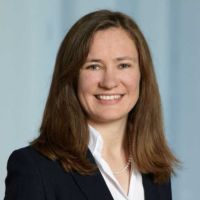
|
Olga Fink - Interpretable Deep Learning for Prognostics: Concept Bottleneck Models for Remaining Useful Life Prediction.
Deep learning has shown great promise in the prognostics of industrial assets, yet its adoption in safety-critical applications remains limited due to a lack of interpretability. Explainable AI (XAI) techniques have been explored to address this challenge, primarily through post-hoc attribution methods that quantify the importance of input features for predicting remaining useful life (RUL). However, these methods often fail to provide explanations in a way that aligns with domain experts’ understanding.
This talk will introduce Concept Bottleneck Models (CBMs) as an alternative approach to improving interpretability in prognostics. CBMs are inherently explainable neural network architectures that use high-level concepts as intermediate representations, allowing domain experts to better understand and even intervene in the prediction process at test time. We will demonstrate how we apply CBMs to model different degradation modes as intermediate concepts and evaluate their effectiveness on the N-CMAPSS aircraft engine dataset. Our results show that CBMs can achieve performance comparable to or even better than black-box models while offering significantly improved interpretability, even with limited labeled concept data.
This talk will highlight the potential of CBMs to bridge the gap between high-performance deep learning and practical, trustworthy prognostics, and we will discuss how this approach can be extended to other industrial applications.
Olga Fink is an assistant professor leading the Laboratory of Intelligent Maintenance and Operations Systems at EPFL (Switzerland) since March 2022. Her research focuses on advancing intelligent maintenance and operations of complex infrastructure and industrial assets through the development of Physics-Informed Machine Learning, (physics-informed) Graph Neural Networks, (multimodal) Domain Adaptation and Generalization and Deep Reinforcement Learning.
|
|
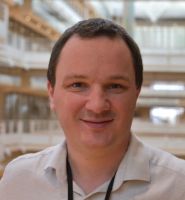
|
Ludovic Chamoin - Physics-augmented AI strategies for the effective solution of complex mechanical engineering problems.
In the talk, I will present some mechanical engineering applications in which AI tools are coupled with physics-based information for enhanced computational efficiency. The first application deals with multiscale model reduction with structural problems exhibiting complex local behaviors (here spot-welded structures under impact), in order to perform fast simulation. The second application deals with the advanced data-driven modeling of materials from experimental data, with typical use in integrated Structural Health Monitoring (SHM).
Ludovic Chamoin is professor at ENS Paris-Saclay. His research activities cover various domains of computational mechanics such as model adaptivity, data assimilation, model reduction, or uncertainty quantification, with strong links with applied mathematics. He is the leader of a research team on advanced modeling and simulation (STAN) in the LMPS lab. He is a Junior member of Institut Universitaire de France (IUF) and has been the Principal Investigator since 2021 of a European (ERC) project dealing with real-time damage evaluation and control on engineering systems.
|
|
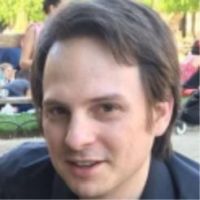
|
Fabien Casenave - Scientific machine learning for industrial design.
In the talk, three advanced technologies developed in recent years at SafranTech in our team will be presented:
1.Physical Reduced-Order Modeling for Non-Linear Structural Mechanics: Applied to compute the lifespan of high-pressure turbine blades.
2. Learning Physics Simulations with Geometrical Variability: Combines classical machine learning tools, non-linear dimensionality reduction (morphing and PCA), and Gaussian process regression with predictive uncertainty. Recent enhancements include automatic morphing and online-efficient methods.
3. Reduced-Order Modeling for Incompressible Navier-Stokes Equations: Uses a manifold learned by a variational auto-encoder, able to handle non-parameterized geometrical variability.
Fabien Casenave is a research scientist in applied mathematics and a team leader at SafranTech, the research center of the Safran Group, a leading French multinational aerospace and defense corporation. At SafranTech’s Digital Sciences and Technologies department, he focuses on developing artificial intelligence and reduced-order modeling technologies to accelerate industrial computations.
|
|
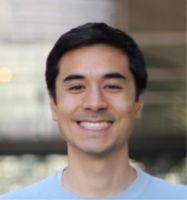
|
Charles Truong - Time series representations based on geometric approaches, focusing on methodologies that consider the temporal structure of data.
In many settings, ranging from behavioral neuroscience or industry to agricultural studies, complex systems (animals, machines, crops) are monitored for extended periods. The objective is to quantify the behavior of those complex systems using the collected time series in order to, e.g., discriminate between a control group and a test group, detect anomalies, or perform a longitudinal study. Classical machine learning procedures struggle to consider the temporal structure of such signals. In this presentation, I will describe how a general methodology based on event detection (change point, motif, or anomaly) can help understand large time series data sets. I will focus on two geometric approaches that can provide intuitive and versatile representations. Change point detection for non-Euclidean time series. Hadamard spaces, which encompass important data spaces like positive semidefinite matrices, certain Wasserstein spaces, and hyperbolic spaces, provide the right general framework to address the complexity of non-Euclidean time series. We propose a computationally efficient algorithm called HOP (Hadamard Optimal Partitioning) that detects changes in the sequence of so-called Fréchet means. The proposed method consistently estimates the change point locations. HOP is highly versatile, accommodating structural assumptions such as cyclic patterns and epidemic settings, making it unique in the literature. Comparing time series using shape analysis. We will describe an unsupervised representation learning (URL) algorithm for time series. The idea is to quantify the deformation need to go from on time series to another. At the crossroads between URL for time series and shape analysis, the proposed algorithm handles irregularly sampled multivariate time series of variable lengths and provides shape-based representations of temporal data. The computed representation can be used to detect anomalous patterns in long sequences of cycles.
Charles Truong is a researcher in applied mathematics focusing on machine learning and time series processing. Charles obtained his PhD in 2018. After a quick round-trip to the start-up nation, he became a post-doctoral researcher at the Centre Borelli (ENS Paris-Saclay) in March 2020. A large part of his research activity is dedicated to the problem of detecting events in multivariate signals. Various settings are considered: supervised and unsupervised, classical statistical models, and end-to-end training deep signal representations. In addition to studying the theoretical aspects of those methods, he puts much effort into proposing documented and efficient implementations (mainly in Python and C/C++). From an application standpoint, his main focus is medical data and, more recently, industrial data.
|
|
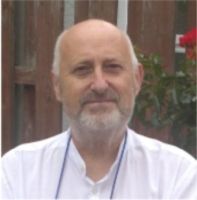
|
Keith Worden - A tutorial on Data-Driven Methods in nonlinear Dynamics.
Over the past two decades, it is fair to say that there has been an explosion in the use of machine learning technologies, or ‘data-driven’ methods, across the entire field of engineering. This is no less true for the subdiscipline of structural dynamics. A modern dynamicist needs, at the very least, some familiarity with these technologies. This seminar attempts to provide an overview of some of the main ideas in data- driven engineering, focusing on the (comparatively) smaller area of nonlinear dynamics—specifically, nonlinear system identification. A particular viewpoint is adopted, based on modern Bayesian methods of regression. Considerable attention is given to the importance of combining measured data with physical insight when modelling dynamic systems and structures. Although this perspective naturally begins with the concept of ‘grey-box’ models, it generalises into the emerging field of physics-informed machine learning. While this tutorial necessarily focusses on a narrow application context, the numerous references provided will allow the curious reader to explore further afield.
Professor Keith Worden is a world-leading expert in structural dynamics, specialising in nonlinear dynamics and structural health monitoring (SHM). A pioneer in data-based health monitoring, his methodologies are widely applied across industry and academia. He is a Professor in the Department of Mechanical Engineering at the University of Sheffield, where he leads one of the world’s largest structural dynamics groups and directs the Sheffield Laboratory for Verification and Validation. Professor Worden is also a Fellow of the Royal Academy of Engineering.
|
|
 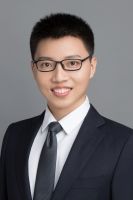
|
Lei Yaguo / Xiang Li - Machine condition monitoring and fault diagnosis empowered by AI.
Machine fault diagnosis based on AI have made significant progress recently. This talk will present recent progress of the speaker's group, like deep learning, transfer learning and large model, and give some practical monitoring and diagnosis cases for industrial plants.
Prof. Yaguo Lei is a professor and the Executive Dean of the SME at Xi'an Jiaotong University. He is a Fellow of ASME, IET, and ISEAM. His research interests focus on intelligent fault diagnosis. He has been recognized as a Global Highly Cited Researcher with H-index of 75
Xiang Li is a Professor at Xi'an Jiaotong University, China. He is an IET Fellow. His research interests include industrial AI, machine vision, multimodal large model, predictive maintenance, etc. He is serving as the Associate Editors for IEEE TNNLS, etc. His citations on Google Scholar are over 10000 with H-index of 48. He is honored to be selected as Highly Cited Researcher by Clarivate.
|
|
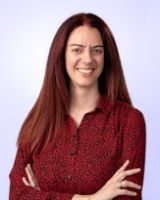
|
Eleni Chatzi - Physics-Enhanced Machine Learning for Monitoring & Twinning | An Exercise in Balance.
Engineering systems require advanced monitoring and resilience assessment for ensuring safety and functionality. Following the practice of Structural Health Monitoring, we propose to take on this task by integrating physics and engineering models with machine learning. Leveraging structured representations (such as reduced order models, physics enhanced ML , and formal grammars) we propose interpretable and adaptable twins for resilient, self-aware structures and systems.
Eleni Chatzi is a Full Professor and Chair of Structural Mechanics and Monitoring at ETH Zürich, specializing in digital twinning and data-driven decision support for engineered systems. Her contributions to self-aware infrastructure have been recognized with various awards, including an ERC Starting Grant and the 2024 SHM Person of the Year award.
|
|

|
Amani Raad - Overview of XAI tools for predictive maintenance.
The main objective of this talk is to give an overview of the most popular XAI tools that could be used for tabular datasets as well as for time-series signals. The advantages and inconvenients of each tool will be discussed as well as the challenges when applying such tools in the objective of machine condition monitoring.
Amani RAAD obtained her PhD in Information Technology and Systems from the University of Technology of Compiegne in France in 2003. From 2003 to 2005, she was a Research and teaching Assistant in the Heudyasic Laboratory in France. Since September 2005, she has been a part-time Assistant Professor in the Electrical and Electronics Engineering Department, Lebanese University, engineering faculty. Since July 2014, she has been a full-time assistant professor at the same department. Her research interests include mainly Digital Signal Processing and Artificial Intelligence for several applications and mainly for predictive maintenance. She received the award of the distinguished professor from the Lebanese University in 2019.
|
|
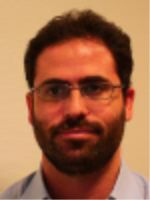
|
Konstantinos Gryllias - Condition monitoring of machinery exploiting Digital Twins, Transfer Learning and XAI.
Condition monitoring of rotating machinery, including fault detection, fault diagnosis and estimation of Remaining Useful Life (RUL), offers significant cost benefits to industry by minimizing unexpected downtimes and failures. Data-driven approaches, often based on Deep Learning, have achieved significant performance. However, limited data availability for model training, influence of varying operating conditions, lack of interpretability and need for robustness and reliability in predictions pose significant challenges in the application of AI based models in real-world applications. The goal of this talk is to present a methodology for diagnostics and prognostics under varying operating conditions, based on Digital Twins and Transfer Learning, which mitigates the need for large historical data for model training, estimating and quantifying in parallel the epistemic and aleatoric uncertainty of predictions, addressing the safety issues in RUL prediction. Moreover a domain transformation technique, which in combination with existing gradient-based XAI algorithms enables the explanation in a domain, different from the input domain of the machine learning model, will be introduced. The methodologies will be applied on different use cases from rotating machinery, with emphasis in rolling element bearings, and their performance will be discussed.
Prof Konstantinos Gryllias holds a professor position at the Department of Mechanical Engineering of KU Leuven, Belgium and since 2017 he is managing the University Core Lab Motion Products - MPRO of Flanders Make, the strategic research centre for the manufacturing industry in Flanders, Belgium, consisted of about 80 researchers. He holds a five years diploma degree and a PhD degree in Mechanical Engineering from National Technical University of Athens, Greece. He is a Chartered Engineer since 2004 and he is member of ASME and IEEE. He currently leads a team of 2 post doctoral researchers, 20 PhD students and 3 PhD visitors. His research interests lie in the fields of vibrations, acoustics, signal processing and condition monitoring. He is author/co-author of 70 reviewed journal papers and 150 conference papers while he serves as a reviewer for various international scientific journals and conferences. He is member of the organizing team of the biennial ISMA conference on Noise and Vibration Engineering and he is chairing the two days International Seminar on Modal Analysis – ISMA organized very year by the LMSD Section of the Department of Mechanical Engineering of KU Leuven.
|
|
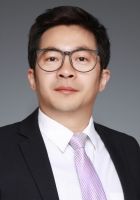
|
Dong Wang - Mechanical Fault Feature Extraction Theories and Methods
Mechanical faults are a significant threat to the safe operation of mechanical systems and pose a major hidden danger. Fault diagnosis, on the other hand, is the core technology for ensuring the stable operation of mechanical systems. The implementation of fault diagnosis is highly dependent on the precise extraction of fault features. Through this process, it is possible to effectively monitor and diagnose the operating conditions of mechanical systems, evaluate the degree of performance degradation, and predict the evolution of faults. In this report, we will focus on three major challenges: fault feature identification, interpretation of fault feature variation patterns, and prediction of fault feature evolution. We will systematically summarize the research achievements of our research group over the past six years. We will explore how to use fundamental disciplines such as statistics, probability theory, and convex optimization to conduct basic theoretical and methodological research on fault feature extraction and successfully apply these methods to the field of equipment fault diagnosis. These research achievements not only help promote the practical implementation of related technologies in engineering fields but also enhance the interpretability of the fault diagnosis process, providing theoretical and technical support for the safe operation of mechanical systems.
Dr. Dong Wang is a National Young Expert by Special Appointment in China, a tenured associate professor at the School of Mechanical Engineering, Shanghai Jiao Tong University. He is dedicated to research on intelligent maintenance and big data analysis, with achievements applied in collaborative research with many institutions such as Lenovo, Huawei, Shanghai Electric, Western Digital, etc. He has served as the Topical Editor for IEEE Sensors Journal, the Area Editor for Journal of Reliability Science and Engineering, and Associate Editor for Mechanical Systems and Signal Processing, IEEE Transactions on instrumentation and Measurement, JDMD, and Measurement.
|
|
